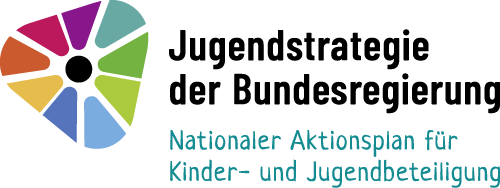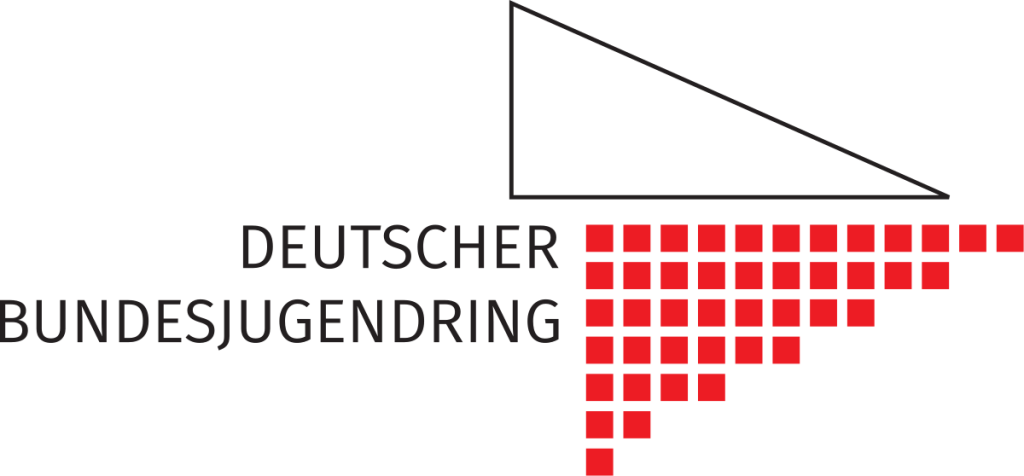
1. Introduction
Children and youth are experts in their own affairs. For them, characterising and valuable experience of self-effectivity results if they are involved in decisions. But above all, children’s and adolescents’ views cannot be replaced in the organisation of our societal presence and future by any other perspective. Participation of children and youth in all the questions which affect them thus contributes to making better decisions and also makes an essential contribution to strengthening our democracy.
At the same time, participation of young people is however an open project which requires permanent verification of what has been achieved and further development in the horizon of societal change. When the national plan of action “For Germany doing justice to children 2005–2010“ appeared in April 2006, this marked an important milestone in development. A further milestone, which has been significant up to the present, followed in 2009 when the “Quality standards for participation of children and youth” appeared (BMFSFJ 2015). More than ten years later, it is time to take a further step. Against this background, the German Federal Youth Council (DBJR) and the Federal Ministry for Family Affairs, Senior Citizens, Women and Youth (BMFSFJ) took on the task of stating standards of quality of participation of children and youth with a view to varying areas of growing up. With the participation of experts from the various fields of action, from science, politics and advocacy groups of young people and other societal organisations, the proposals made up to now were supplemented and focused with a view to quality standards. In total, this has led on the one hand to a recognisable extension of the fields of practice which have been incorporated and on the other hand to the setting of specific focal points.
The impulse for further development and qualification of participation formats with young people aimed for is a part of the “National Action Plan for Child and Youth Participation” (NAP) for the further development of the federal government’s youth strategy. The youth strategy is a cross-departmental approach with the commitment of the federal government to its joint responsibility for the young generation. It is a question of thinking along with young people and their interests and making them visible. With the new NAP for involvement of children and youth, particular emphasis is now being placed on strengthening their possibilities of involvement. A part of the federal government’s youth strategy is implementation of the EU youth strategy in Germany. As an integral part, this does justice to the fact that also European and global decisions have effects on young people and that involvement of young people is to be strengthened, also with a view to these areas.
Participation of young people is already being practised in many kinds of contexts. Involvement can take on very differing formats – depending on the context. There can be no dispute that comprehensible quality standards are needed for the involvement of children, adolescents and young adults, as for all other approaches to action in work with young people. At the same time, the debates on the subject and varied experience show that, although there has been agreement in the meantime on some general quality standards (cf. subsection 4)i, the “breaking down” of these general requirements of participation to the individual constellations in situ and contexts again and again causes difficulties and cannot be solved formally. Successful involvement of children, adolescents and young adults is not simply fulfilled by processing formal quality standards. It can only be successful if they are adapted and converted situatively, i.e. relative to the subject, topic and context, practically for the process, with sensitivity for space, time and structure with a view to the children, adolescents and young adults to be involved in the individual case. The tension relationship created in this between general quality standards and specific contents of action also becomes visible in the present quality standards for participation of children and adolescents, whereas they simultaneously aim at pooling the relevant discussion close to practice and providing impulses for the further development.
The sections for the individual fields of action (subsection 6, 7 and 8) have been written participation experts from the areas in question. In the pedagogic and political fields of action (cf. subsection 6 and subsection 7), participation takes place in both an analog and also a digital form. A specific section (subsection 8), also in order to emphasise the current and future significance of the subject, therefore concerns itself with the discussion about quality standards in the context of digital involvement or e-participation of children, adolescents and young adults. Prior to this, section 2 presents a brief summary of the central approaches to substantiation for involvement of young people, then giving a brief introduction to the underlying idea of involvement (subsection 3) and to the guiding heuristics. Section 5 then dedicates itself to the general quality standards.
The focusing on quality standards of participation of children and youth in the fields of action which has been done here makes two supplements necessary. Firstly, the list of the fields of action which have become the centre of attention here is by no means complete and exclusive. Even if the spectrum of fields of action has been distinctly extended compared with the previous brochure, there are still some white areas left. In the further work on the subject, the important thing will be furthering the debates about quality standards of participation above all for the areas of company and vocational training education, transition system, integration help, but also for example universities and the health system. The question of whether additional looks at central procedures, e.g. planning in the social area, the individual establishments of requirements, complaints and similar, will also have to be addressed. So the present quality standards for children’s and adolescents’ participation regard themselves as a milestone which further ones ought to follow in this regard.
Secondly, the concentration on the quality standards means that the political debates about existing rights of participation of children and youth possibly to be extended or asserted are not treated systematically here. However, the context is clear: participation can only fulfil the expectations placed in it – e.g. with a view to democratisation, societal integration and political education – and be experienced as sensible and effective from the children’s and adolescents’ perspective if participation in decision-making is made possible for then as early as possible. This is why the quality standards for participation of children and youth presented here presuppose that extension of the binding participation rights of children and youth will be necessary in a number of areas in the future. This primarily entails lowering the voting age to 16 years. But communal constitutions must also be mentioned. Implementation of the right to participation should become a mandatory task for the communes. A change or supplement to the orders/ordinances of the communes should make involvement of children and youth in communal decisions which affect them binding, which also means verifying the “can/should directives” up to now with a view to their effectivity – especially as experience shows that “must directives” obviously entail a higher bindingness. Extending participation rights and making them binding however does not only affect the political area, but, for example, also schools and other pedagogic areas. The debates about the significance of children’s and human rights and the question of how they can be given more emphasis in all areas of society make clear that considerable societal agreements and political efforts are necessary.
Against this background, the quality standards for children’s and adolescents’ participation are to enable effective and modern participation processes within the existing framework conditions in the combination of general quality standards and practice-orientated contributions, encourage development of further involvement concepts and thus all told to contribute to further extending and forwarding possibilities for effective involvement of children in the coming years as well. Parallel to this, extending children’s and adolescents’ participation rights remains a political debate and challenge.
1 However, it must be stated that differences which are remarkable in their details can be observed between the various concepts to be found in the subject-based discussion – which however is also to do with the understanding of what a relevant quality standard is.



